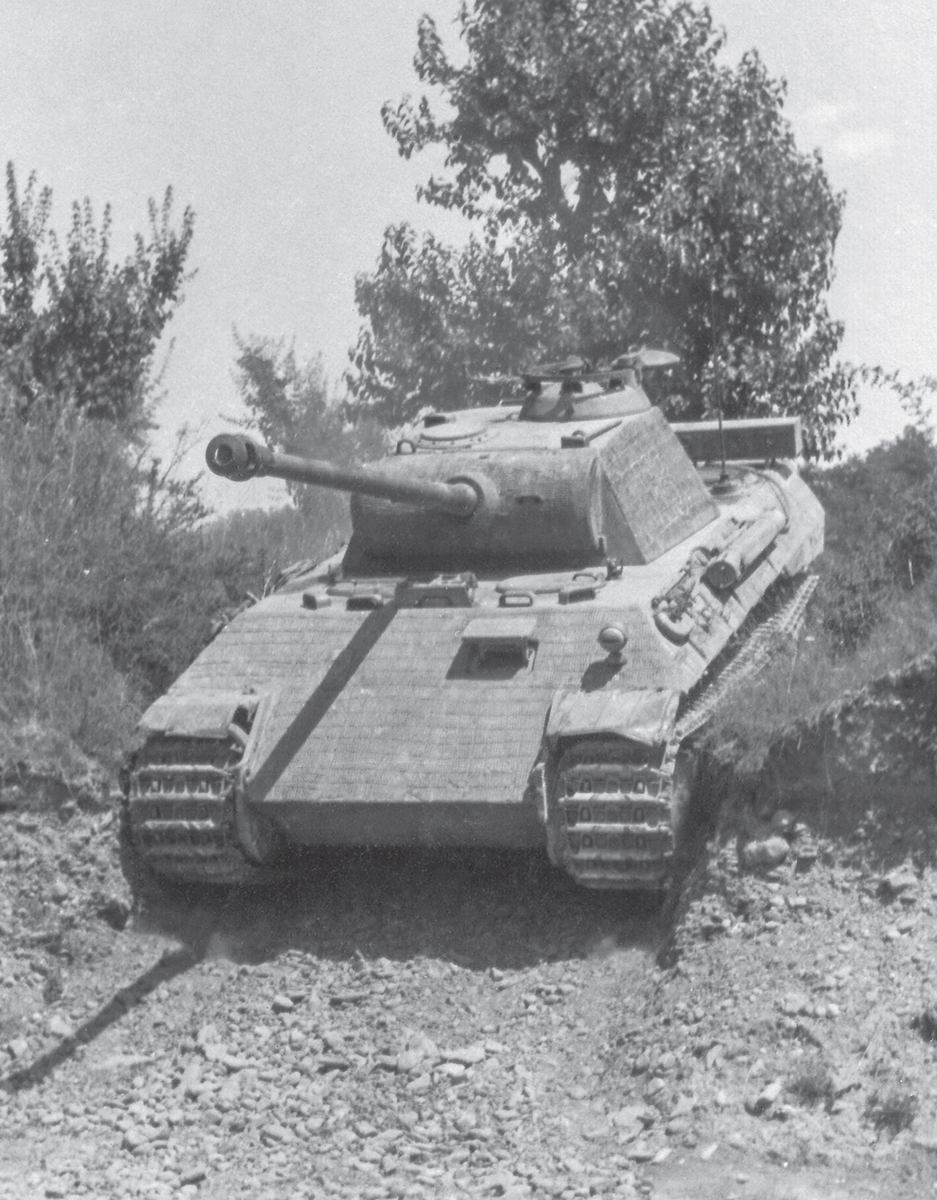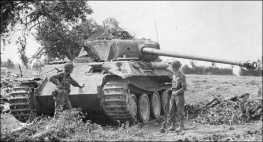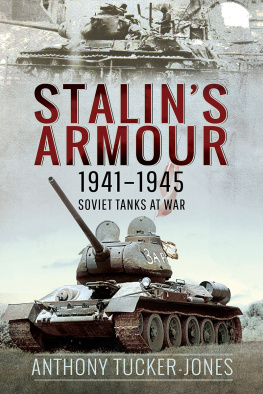
This book is dedicated to the late Thomas L. Jentz, guiding spirit in our research.
Osprey Publishing
c/o Bloomsbury Publishing Plc
PO Box 883, Oxford, OX1 9PL, UK
or
c/o Bloomsbury Publishing Plc
1385 Broadway, 5th Floor, New York, NY 10018, USA
E-mail:
www.ospreypublishing.com
This electronic edition published in 2017 by Bloomsbury Publishing Plc
OSPREY is a trademark of Osprey Publishing, a division of Bloomsbury Publishing Plc.
First published in Germany in 2017, by GeraMond Verlag GmbH, Infanteriestrasse 11a, 80797, Munich.
2017 GeraMond Verlag GmbH, Mnchen
All rights reserved.
English language translation 2017 Osprey Publishing.
All rights reserved
You may not copy, distribute, transmit, reproduce or otherwise make available this publication (or any part of it) in any form, or by any means (including without limitation electronic, digital, optical, mechanical, photocopying, printing, recording or otherwise), without the prior written permission of the publisher. Any person who does any unauthorised act in relation to this publication may be liable to criminal prosecution and civil claims for damages.
Every attempt has been made by the Publisher to secure the appropriate permissions for material reproduced in this book. If there has been any oversight we will be happy to rectify the situation and written submission should be made to the Publisher.
A CIP catalogue record for this book is available from the British Library.
Thomas Anderson has asserted his right under the Copyright, Designs and Patents Act, 1988, to be identified as the Author of this Work.
ISBN: 978-1-4728-2703-6 (HB)
ISBN: 978-1-4728-2702-9 (eBook)
ISBN: 978-1-4728-2701-2 (ePDF)
ISBN: 978-1-4728-2704-3 (XML)
Translator: Geoffrey Brooks
Editor: Jasper Spencer-Smith
Produced for Osprey Publishing by Editworks Limited
Bournemouth, BH1 4RT, UK
Osprey Publishing supports the Woodland Trust, the UKs leading woodland conservation charity. Between 2014 and 2018 our donations are being spent on their Centenary Woods project in the UK.
To find out more about our authors and books visit www.ospreypublishing.com. Here you will find our full range of publications, as well as exclusive online content, details of forthcoming events and the option to sign up for our newsletters. You can also sign up for Osprey membership, which entitles you to a discount on purchases made through the Osprey site and access to our extensive online image archive.
CONTENTS

A PzKpfw V Panther of I./PzRgt 4 crossing a river bed in Italy at slow speed. The crew has fixed a box across the rear, a valuable place for stowing rations and personal belongings. The drivers hatch is wide open apparently enemy contact was not expected. (History Facts)
Foreword
This book details the Panzerkampfwagen (PzKpfw) V Panther medium tank, from concept through design and development, to production while the German armaments industry was under continuous attack by Allied bombers. When the type entered service it was deployed against Allied forces in the west; the last desperate offensives against the Red Army in the east and the bitter fighting in defence of the Fatherland.
The PzKpfw V Panther represented a new pinnacle in tank design in World War II, as the Soviet-built T-34 had done in 1941. From 1943, the Panther pushed forward the limits of the three fundamental factors: firepower, mobility and armour.
From the beginning, Generaloberst Heinz Guderian the Father of the Panzerwaffe proposed that the technical specification and tactical capability of the Panther were to synchronize perfectly with his concept of a Panzer division. The same divisions, which with simple pre-war equipment had conquered large parts of Europe.
The designers were required to create a tank. After great initial difficulties a vehicle resulted with extraordinary specifications and which, reduced to its achievements both technical and tactical, was superior to all enemy tanks from then to the end of the war.
The combination of high mobility, an effective main gun and good armour pointed the way forward into the post-war period.
This book may bring the essential character of the medium tank closer to the reader and answer questions. Can often superficial evaluations withstand critical examination?
Thomas Anderson
Spring 2017

Photographed on the 15th Panzer Division training area in Sagan, Silesia this excellent view of a Panther Ausf D, shows all the power and grace of this superb tank. The 75mm KwK42 L/70 gun was extremely lethal, being able to penetrate 88mm of armour plate at 2,000 metres. (Panzerfoto)
Introduction
Summer 1941. The appearance of a modern Soviet tank, the T-34, came as a complete surprise and put paid to the current developments and future plans of the German armaments industry. A new beginning was called for. In 1942, under dramatic circumstances, the development began of the PzKpfw V Panther; possibly the best main battle tank of the World War II.
The Eastern Front
The war began at 05:45 hrs on 1 September 1939, when German forces invaded Poland. On 10 May 1940, The Low Countries were invaded as a prelude to the invasion of France. By 14 June, German forces were parading through Paris and an armistice was signed on 22 June, leaving northern Europe occupied. On 21 July 1941, Unternehmen (Operation) Barbarossa was launched against the Soviet Union, opening a new stage of the war. While a rapid victory appeared very achievable during the summer months, the arrival of the heavy rains of autumn and then severe frost and snow of winter destroyed all ambition. Battle-proven German forces, and above all units of the Panzerwaffe, who had become accustomed to victory, were halted at the gates of Moscow.
In the months before the invasion, the Panzerwaffe had been experiencing a phase of changes to organizational structure and equipment inventory.
1941 The Initial Situation
A document from 3.PzGruppe, dated 10 May 1941, describes the problems of this adjustment:
I. Old Panzer Divisions
1 .) The combat units of 7.PzDiv are in, or are being brought into, good order. Recently returned from France for general maintenance, 7.PzDiv still has a large number of vehicles at workshop units for major overhaul. Therefore it has, at this time, only limited mobility.
II. New Panzer Divisions
2 .) All of the Panzer regiments in the new tank divisions are well equipped.
3 .) The artillery is equipped with an adequate number of armoured command vehicles.
4 .) The equipping of the infantry regiments does not meet with requirements. There is worrying lack of armoured vehicles.
5 .) Two weeks ago, 19.PzDiv received a large number of vehicles for their infantry units... but the number is so small that still they have to operate with the vehicles of various other units for exercises.
6 .) As a temporary measure, 20.PzDiv is being equipped with captured French types... but training time still remains very limited.






















